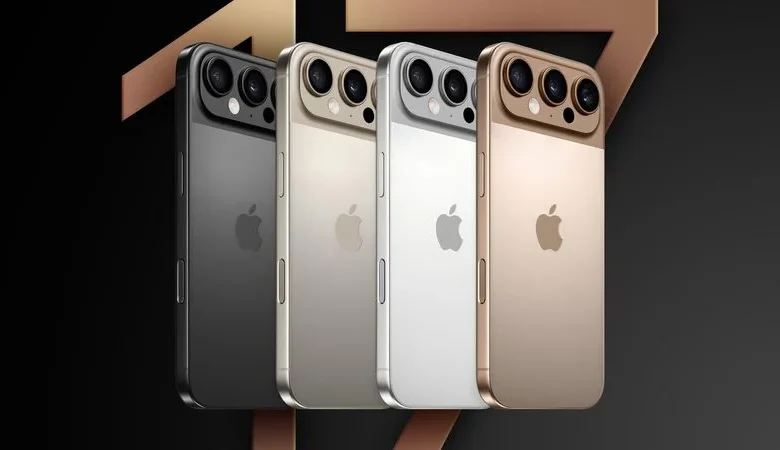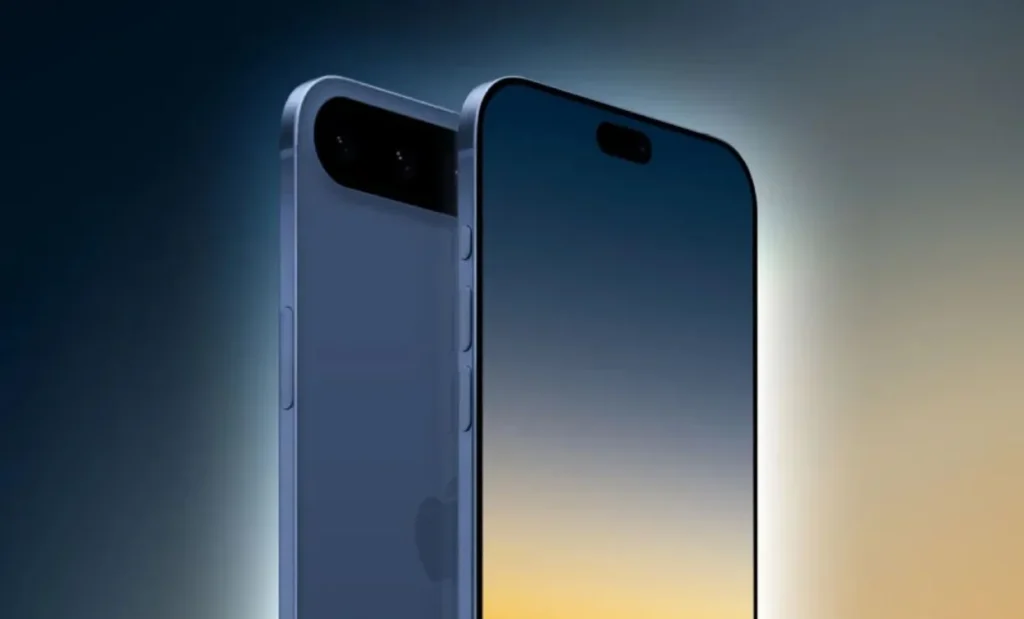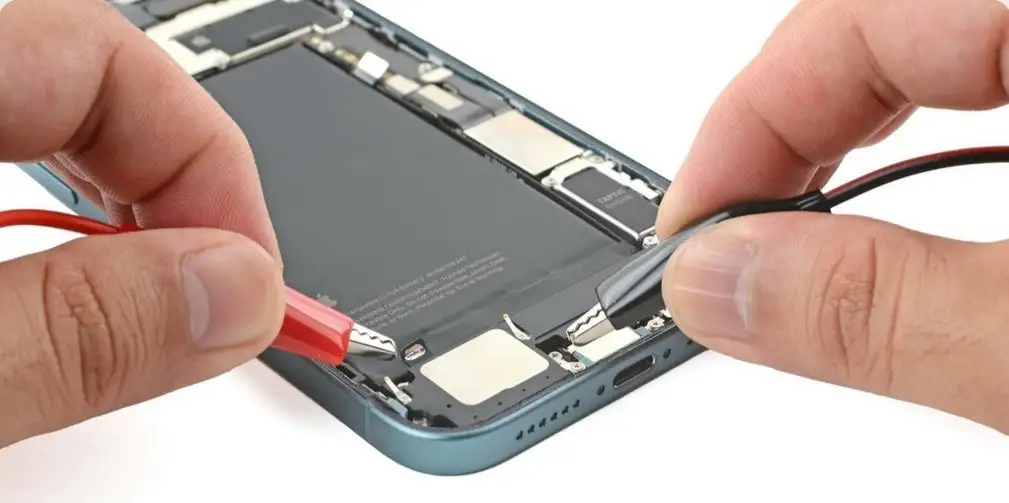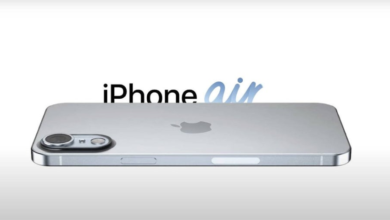iPhone 17 Rumors: Compact Design, Big Features

As Apple prepares to unveil the iPhone 16 later this month, speculations are already flying about what they plan on revealing for iPhone 17 models when they launch in 2025. According to Haitong International Securities analyst Jeff Pu, reports indicate that these iPhone 17 models may feature both an updated look and unique names.
Expected updates to the iPhone 17 Pro Max include the introduction of a brand new Slim model as well as smaller and more active islands; further, front-facing camera quality has been significantly upgraded; now boasting a 24MP lens.
iPhone 17 Light:
The iPhone 17 Slim is rumored to feature a 6.6-inch display, aligning with hints previously shared by display analyst Ross Young. This screen size represents a notable shift, as earlier reports suggested such dimensions were planned for the Plus model. This has led to speculation that the Slim model might not just be a new addition but could potentially replace the current Plus variant in Apple’s lineup.
True to its name, the iPhone 17 Slim is expected to showcase a sleek and refined design, characterized by a thinner body and a marginally smaller display size—0.1 inches less than the 6.7-inch screen on the current Plus model. Beyond the size reduction, the Slim model is anticipated to prioritize lightweight portability and elegance, signaling a distinct design philosophy aimed at users seeking a more compact yet premium device.
Display:

ProMotion and Always-On Displays
ProMotion refresh rate, previously limited to Pro iPhone models for some time now, could finally make its debut across all iPhone lineups in 2025. According to reports, both Pro and standard iPhone 17 models may support ProMotion functionality enabling always-on functionality for all models.
Apple is expected to equip all iPhone 17 devices with low-temperature polycrystalline oxide (LTPO) panels known for their superior power efficiency, making ProMotion and always-on technology possible. This change would extend features like always-on timer, widgets, and notifications previously exclusive to Pro models to the entire lineup.
ProMotion supports refresh rates ranging from 1Hz to 120Hz, with higher frequencies providing smoother scrolling and enhanced video playback while 1Hz refresh rates conserve battery life when an always-on display is active.
Enhanced Display Durability
Apple may include an anti-reflective and scratch-resistant layer in their iPhone 17 lineup that outshone Ceramic Shield technology’s durability.
This ultra-hard anti-reflective layer is intended to reduce glare while providing enhanced protection from everyday wear and tear, making the iPhone 17 displays both more resilient and user-friendly in different lighting conditions.
Apple-Built 5G Chip

Rumor has it that Apple-designed 5G modems could make their debut in one or more iPhone 17 Slim devices; all other versions will continue using Qualcomm modems.
Apple’s custom modem should provide theoretical download speeds up to 4Gbps – slightly lower than Qualcomm’s current offerings – though only sub-6GHz networks will be supported, leaving out faster mmWave technology.
SIM Tray Updates
Apple plans to extend its removal of physical SIM trays with its iPhone 17 lineup to additional countries, although specific regions remain unconfirmed. This follows suit after its removal in the United States with iPhone 14 models.
Given its anticipated ultra-thin design, it is possible that the iPhone 17 Slim may be forgoing physical SIM card support entirely – even in regions where physical cards remain prevalent.
Apple-Designed Bluetooth and Wi-Fi Chip
Apple Is Expected to Include its Own Bluetooth and Wi-Fi Chip All iPhone 17 models will likely incorporate an Apple-designed Bluetooth and Wi-Fi 7 chip that replaces components previously supplied by Broadcom. This chip will exist independently from the 5G modem within Slim models as part of Apple’s initiative to integrate wireless technologies.
Apple hopes that by designing its own chips, it can develop an energy-efficient wireless system. Such an arrangement would decrease power consumption for cell, Wi-Fi, and Bluetooth technologies while maintaining strong performance and prolonging battery life.
Battery

The iPhone 17 is expected to feature a 3,600mAh battery that should provide all-day battery life for users. Furthermore, faster charging speeds may be included along with enhancements for wireless charging for added convenience.
Here are a few more rumored features for the iPhone 17:
Battery Removal Technology
Apple may soon introduce an electrically-induced battery removal system. This revolutionary idea uses an adhesive mechanism that softens when connected to a power source, making battery replacements much simpler and the device more repair-friendly.
Resin-Coated Copper Mainboards
Apple is reported to be exploring resin-coated copper (RCC) mainboards in their next iPhone model – potentially contributing to its slim profile while maintaining performance and durability. This advanced material could significantly reduce mainboard thickness while keeping.
Storage
Notably, Apple could alter these specifications over time; perhaps starting the standard iPhone 17 lineup at 256GB storage instead.
One key factor driving this shift could be the growing demand for artificial intelligence-powered features. By 2025, AI capabilities on devices may necessitate higher power and storage requirements than can be met by 128GB options.
Rumors swirl that Apple could introduce 8GB of RAM and 256GB of storage as standard on all future iPhone models, beginning with the iPhone 16 series. This upgrade would help meet AI-driven processes’ increased data needs while offering smoother performance through increased RAM.
Consider that both iPhone 15 and 15 Plus offered just 6GB of RAM and 128GB of storage by default, making this upgrade an important step towards meeting modern technological needs.
What’s Next
Cameras, batteries, storage, and RAM can make interesting conversation pieces but let’s focus on what makes an iPhone truly outstanding: its chipset.
The chipset, or System-on-Chip (SoC), of your phone, is its “brain,” housing components such as CPU, GPU, memory, and communication modules into one device. Apple’s current A18 chip introduced with the iPhone 16 series is expected to evolve into A19 and A19 Pro chips with future iPhone 17 devices.
The big question regarding Apple’s A19 processor will be whether it adopts 2nm technology or stick with 3nm like its predecessors. Smaller nanometer technology enables more transistors, leading to more efficiency and power compared with its 3nm counterpart. While initial reports suggested Apple would debut their 2nm SoC in their iPhone 17, recent leaks suggest this milestone might not come until sometime after 2017.
Samsung plans on using a 2nm Exynos 2600 chip in its Galaxy S26 Ultra device due out in early 2026, so should Apple fail to release an iPhone 17 featuring such technology, Samsung could potentially gain the edge in this tech race.
Apple-designed Wi-Fi and Bluetooth chips with Wi-Fi 7 support will also improve energy efficiency and ecosystem integration, providing significant gains in performance, connectivity, and seamless integration for seamless user experiences. Finally, with the “Centauri” 5G modem coming later in 2018, the iPhone 17 promises significant gains in performance, connectivity, and seamless integration for seamless performance and usage experience.




